By Lawrence E. Heiskell, M.D.
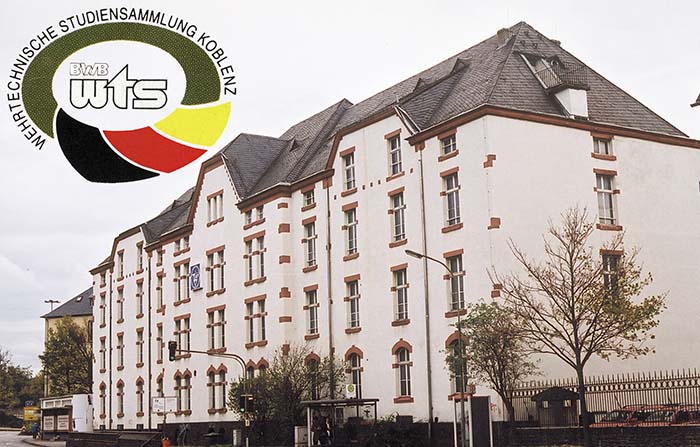
A short drive down the Rhine River among the countless vineyards and castles (approx. 45 kilometers) is the city of Koblenz. The city of Koblenz is famous because, it is here that the Rhine and Moselle rivers become confluent. The idyllic Moselle Valley is the best known of all Germany’s wine producing areas.
Situated near the Moselle River is one of the world’s largest collections of historic and modern small arms and military hardware. This magnificent collection includes but is not limited to small arms, machine guns, artillery pieces, rockets, tanks, aircraft, vehicles and field equipment and rare prototypes. The Germans prefer not to call it a museum but a working collection for research and study. The material available for study ranges from the 15th century to present time.
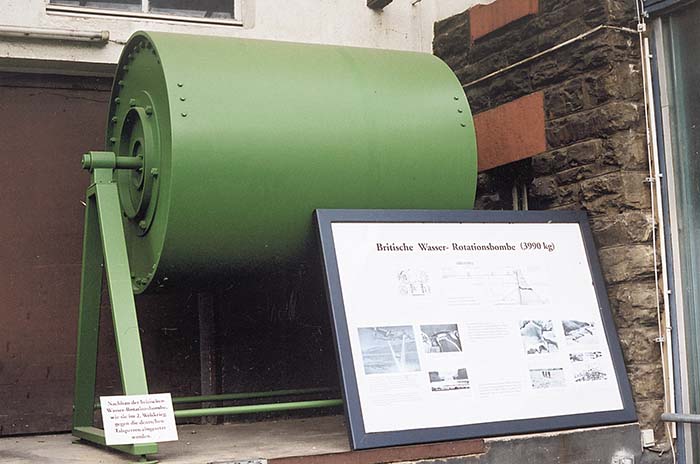
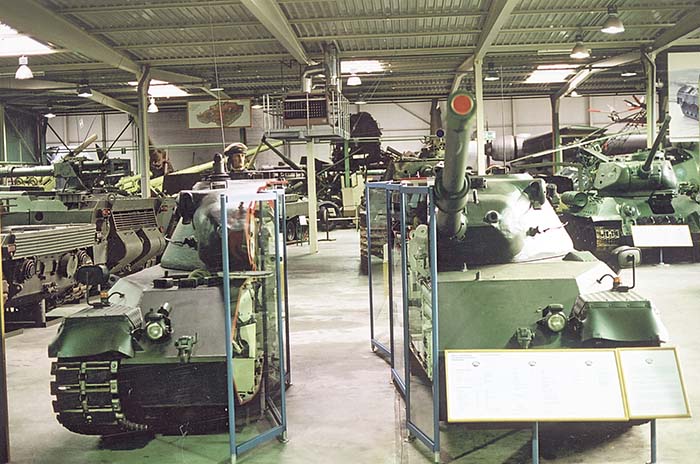
A Brief History
The Wehrtechnische Studiensammlung or WTS (Defense Material Collection) is an institution of the Bundestant fur Wehrtechik und Beschaffung BWB (Federal Office for Defense Technology and Procurement). The collection was first organized in 1962 and located at the Military Test Center 91 in Meppen, Germany.
On November 12th, 1982 the collection was moved to its present location and first opened to the public on Mayener Strasse in the city of Koblenz. The main building of 1800 vintage consists of 5 floors, and the entire complex comprises over approximately 65,000 square feet. Over 9,000 small arms are held in inventory.
Tanks and Tracked Vehicles
Located on the first floor is a massive room that houses an impressive display of tanks, track vehicles, artillery pieces and aircraft. As you enter the room you pass through a Leopard 1 tank that is cut in half (with of course German precision) and gives the viewer an excellent view of the internal components of the tank. Other interesting vehicles include a Panzerkampfwagen and Panther models III, IV and V. Within this display is a fantastic example of a Sturmtiger tank of which only 18 were ever built.
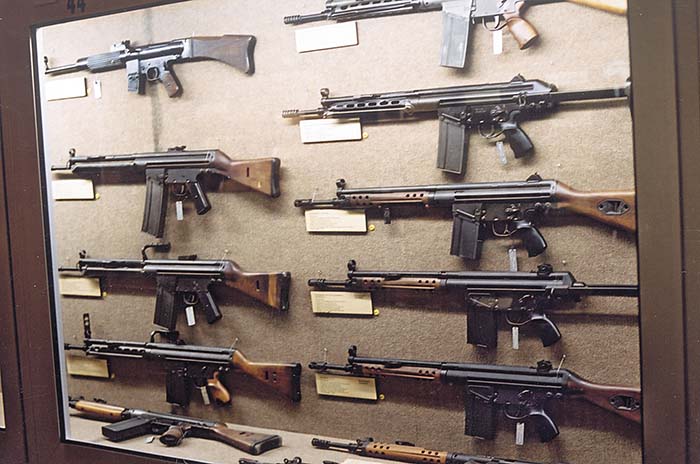
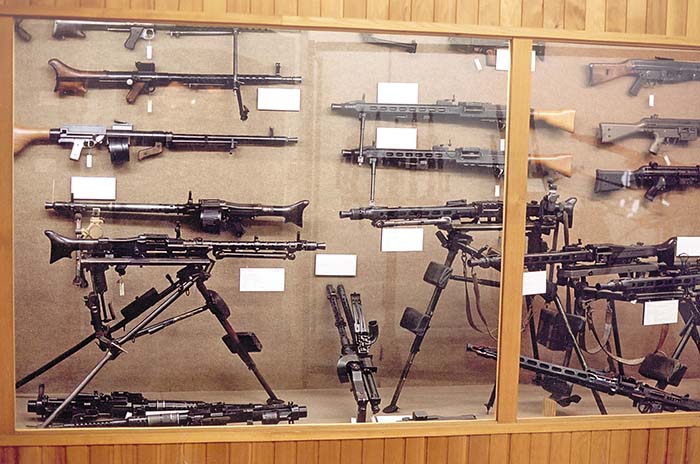
Small Arms Collection
The small arms section consists of wonderful exhibits documenting the development of small arms from the 1399 Tannenberg Musket to the Heckler & Koch caseless ammunition G11. This exhibit comprises more than 5,000 pieces and is reported to be one of the largest in Europe.
Machine Guns and Automatic Weapons
An entire floor of the building houses an impressive collection of machine guns and automatic weapons. These range from early automatic weapons developed by Mauser and Rheinmetall to examples of Dr. Richard J. Gatling’s famous gun. On display are several models including the 1873, 1883 and 1895 models.
The collection of machine guns on display in well lighted glass display cases demonstrate the development of automatic weapons from WWI, WWII to modern times. All of the renowned German examples are here, including the MP18, MP28, MP38, MP40, MP41, MP43, MP44, STG44, MG 34 and the MG 42.
The well known types manufactured by Bren, Lewis, Madsen, Vollmer, Bergmann, Hotchkiss, Stoner, Browning, Colt and Kalashnikov are also included in the collection.
Behind lighted cases is an impressive Heckler & Koch weapons display. The entire family of the G3 up to the G36 and the MP5 series can be seen. Also included is the G11. WWI and WWII belt fed machine guns are also on display along with an impressive collection of vintage aircraft guns.
At the entrance of the building is a beautiful reproduction of the famous ‘Dam Busting Bomb” developed by Sir Barnes Neville Wallis, the renowned British scientist and aeronautical engineer. In early 1943 the British Air Staff had developed a unique secret plan, code named, ‘UPKEEP”, to cripple the Reich’s war production by destroying three huge dams; the Eder, Moehne and Sorpe. These dams constituted the flood control system for the rivers in the Ruhr industrial valley.
The bomb is shaped like a gigantic oil drum five feet long and five feet in diameter weighing one ton, was to be dropped from specially equipped and modified Lancaster bombers. On approach to the dams the planes few at just 60 feet over the water and an auxiliary motor inside the plane placed a backspin on the drum at 500 revolutions per minute. Once dropped it would skip along the surface of the water until it struck the side of the dam and sank.
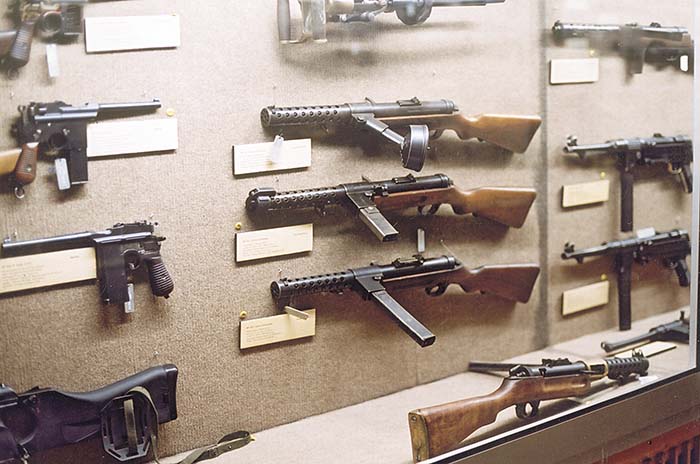
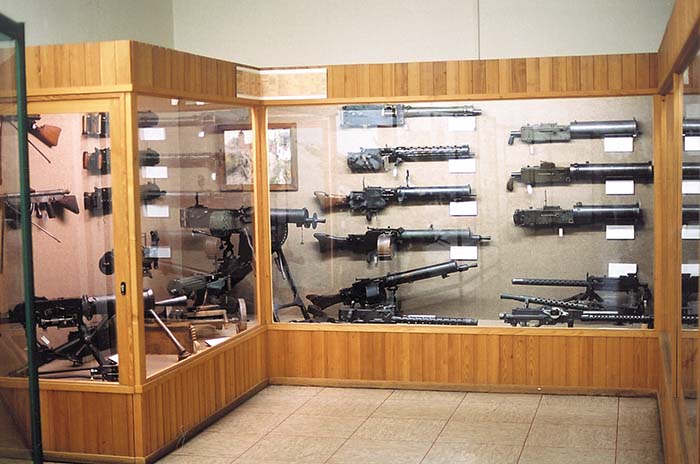
It would explode by a hydrostatic fuse set for 30 feet below the surface. Eighteen Lancaster bombers of the 617 Squadron launched their attack on the night of May 16, 1943. Of these, two failed to reach the dams and eight were shot down. The Moehne and Eder dams were destroyed but the Sorpe survived the one bomb that hit it.
So secret was the “Dam Busting Bomb” that its existence was not made public until twenty years after the war. Wing commander Guy Gibson was awarded the Victoria Cross, Britain’s highest award for valor. In September 1944 Gibson was shot down during a night bombing raid over Germany.
The WTS collection is open to the public and you are allowed to take photographs for private purposes. You will need a permit in writing by WTS for publications. There is a reference library of 15,000 volumes and 60,000 technical manuals that is available to the public on advance notification.
A professional archivist maintains and cares for the tens of thousands of documents in the archives and supports researchers and writers in their efforts to research and study weaponry. Adjacent to the WTS building is a fantastic military bookstore with thousands of books for sale. There are both new and hard to find out of print books in English and German.
Hours: Open throughout the year daily from 9:30 am to 4:30 pm except December 24 – January 1 and Rosemonday (the Monday before Ash Wednesday)
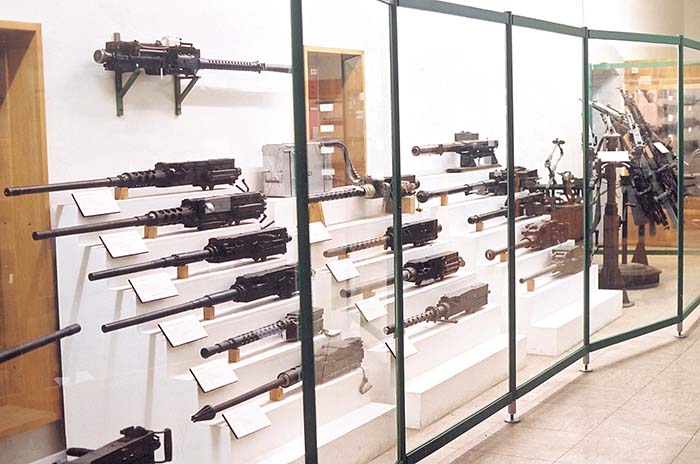
The WTS is located at:
Mayener Strasse 85-87
56070 Koblenz
Germany
From Germany dial:
Telephone 02-61-400-1423
Fax 02-61-400-1424
The entrance fee is 2 DM (about 1 US dollar or 1 Euro). There is no entrance fee for military personnel in uniform. Donations are also appreciated. Plan on spending at least 5 hours to see everything.
A special thanks to my wife Astrid for translating and for the information she gathered with her interview with the Director of WTS, Dr. Rolf Wirtgen.
| This article first appeared in Small Arms Review V6N2 (November 2002) |












